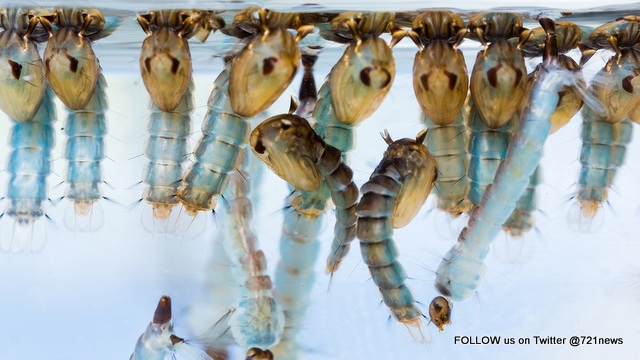GREAT BAY, Sint Maarten (DCOMM) – The Collective Preventive Services (CPS), a government department under the Ministry of Public Health, Social Development and Labour, is calling on the community as well as visitors to wear light colored clothing at dusk; long sleeve shirts and pants; and use mosquito repellent to prevent being bitten by a mosquito that could possibly be carrying dengue, zika or chikungunya.
Visitors and residents who go out during the evening hours to various venues, are advised to take preventative measures to prevent one from getting dengue, zika or chikungunya.
Dengue fever, zika and chikungunya are transmitted by the female vector Aedes Aegypti mosquito. The Aedes Aegypti mosquito is distinguished by its markings. The body of the mosquito has alternate black and white horizontal stripes. The Aedes Aegypti mosquito lays her eggs in clear (clean) stagnant water. Within eight days the mosquito can complete its life cycle from egg, to larvae to pupae and to adult mosquito.
Persons are also requested to keep their homes, yards, neighborhoods and work environment free from potential mosquito breeding sites.
Actively destroy or dispose of tin cans, old tires, buckets, unused plastic swimming pools or other containers that collect and hold water. Do not allow water to accumulate in the saucers of flowerpots, cemetery urns/vase or in pet dishes for more than two days. Throw out the water and turn them over every time it collects water.
Clean debris from rain gutters and remove any standing water under or around structures, or on flat roofs. Check around faucets and air conditioner units and repair leaks or eliminate puddles that remain for several days.
Check for trapped water in plastic or canvas tarps used to cover boats, pools, plastic bags, foam dishes or even plastic cups strewn on the road side.
Clean the dead leaves from banana and coconut trees. Adult mosquitoes prefer to rest on weeds and other vegetation. Homeowners can reduce the number of areas where adult mosquitoes prefer to rest on weeds and other vegetation. Trim overgrown vegetation.
Check around construction sites or do-it-yourself improvements to ensure that proper backfilling and grading is realized to prevent drainage problems which can be a source for standing water. Empty all construction containers such as blue tanks, buckets, paint cans etc.
Mosquitoes can be kept out of the home by keeping windows, doors and porches tightly screened (16-18 mesh). Those insects that do get into structures can be eliminated with a fly swatter or an aerosol space spray containing synergized pyrethrum.
Adult mosquitoes prefer to rest on weeds and other vegetation. Homeowners can reduce the number of areas where adult mosquitoes can find shelter by cutting down weeds adjacent to the house foundation and in their yards, and mowing the lawn regularly. To further reduce adult mosquitoes harboring in vegetation, insecticides may be applied to the lower limbs of shade trees, shrubs and other vegetation. Lot owners should also manage overgrown vegetation and litter on the respective lots. Screen off cistern outlets, cover and screen septic tanks properly.
The aforementioned measures should also be taken in and around the workplace, social gatherings and living quarters to eliminate mosquito breeding sources.
An increase in the mosquito population puts residents at risk. For information about dengue fever, zika and chikungunya prevention measures, you can call CPS 542-2078 or 542-3003.
































